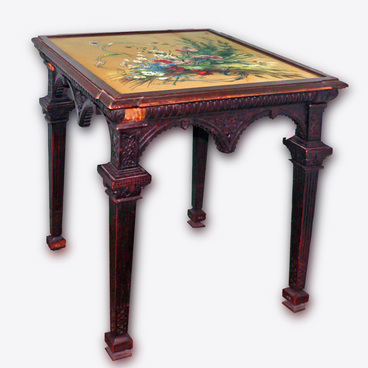In military affairs, it is often required to transmit approved sound and light signals over a long distance. In the past, this was achieved with fires, smoke, drums and cannon shots. However, all of these methods required some training. To give a signal promptly required a small-sized technical device that was ready to work at any time. Such a device was created only in the second half of the 19th century. This device is called a ‘signaling pistol’, and in common parlance - a flare gun.
A flare gun is a pyrotechnic means of visual, or sometimes auditory communication, which was used to transmit short commands, to raise an alert, to designate, and for mutual recognition of troops. With the help of flare guns, troops can ask to fire on a target, relocate an attack, or cease fire. Flare guns assist in pointing to a target.
As a signal was given, consisting of several signal flares, the flares were fired at intervals of 8-10 seconds. The interval between individual signals must be at least one minute. Each signal was assigned its own flare color. For example, one green flare allowed movement and meant ‘everything is in order, we are continuing our work.’ The signal ‘rations required’ was given by green and red flares, and only red meant ‘help is needed.’ To request indication of a direction was three flares - red, green, red. To bring medicine - red and red. Emergency aid was demanded with three red flares in a row.
Flare guns have long been used for their intended purpose — to give signals. However, in the 20th century, they were also adapted for close combat with enemy infantry and tanks. In addition to giving signals, the fleet used flare guns to launch a thin ship’s cable — a line to the shore or to a ship in distress. This type of flare gun is called a line thrower.
The Kotlas Museum received an English flare gun М1916 from the collection of the National Museum. This flare gun consists of a grip that blends seamlessly into the frame, breech and barrel. The handle is framed with walnut wood panels on both sides. On the bottom of the handle there is a steel ring for fixing on the belt. The breech - that is, the hammer, latch and trigger - is made of steel. The hammer smoothly turns into the firing pin, which has the shape of a pointed cone. The frame, the central part of the handle and the barrel are made of brass. To charge the flare gun, the barrel must be bent forward. The smooth barrel with two lugs terminates in a bell. All parts of the flare gun are attached with screws. On the left side of thе flare gun’s frame under the barre is the manufacturer’s signature: WEBLEY & SCOTT LTD LONDON & BIRMINGHAM.
A flare gun is a pyrotechnic means of visual, or sometimes auditory communication, which was used to transmit short commands, to raise an alert, to designate, and for mutual recognition of troops. With the help of flare guns, troops can ask to fire on a target, relocate an attack, or cease fire. Flare guns assist in pointing to a target.
As a signal was given, consisting of several signal flares, the flares were fired at intervals of 8-10 seconds. The interval between individual signals must be at least one minute. Each signal was assigned its own flare color. For example, one green flare allowed movement and meant ‘everything is in order, we are continuing our work.’ The signal ‘rations required’ was given by green and red flares, and only red meant ‘help is needed.’ To request indication of a direction was three flares - red, green, red. To bring medicine - red and red. Emergency aid was demanded with three red flares in a row.
Flare guns have long been used for their intended purpose — to give signals. However, in the 20th century, they were also adapted for close combat with enemy infantry and tanks. In addition to giving signals, the fleet used flare guns to launch a thin ship’s cable — a line to the shore or to a ship in distress. This type of flare gun is called a line thrower.
The Kotlas Museum received an English flare gun М1916 from the collection of the National Museum. This flare gun consists of a grip that blends seamlessly into the frame, breech and barrel. The handle is framed with walnut wood panels on both sides. On the bottom of the handle there is a steel ring for fixing on the belt. The breech - that is, the hammer, latch and trigger - is made of steel. The hammer smoothly turns into the firing pin, which has the shape of a pointed cone. The frame, the central part of the handle and the barrel are made of brass. To charge the flare gun, the barrel must be bent forward. The smooth barrel with two lugs terminates in a bell. All parts of the flare gun are attached with screws. On the left side of thе flare gun’s frame under the barre is the manufacturer’s signature: WEBLEY & SCOTT LTD LONDON & BIRMINGHAM.

